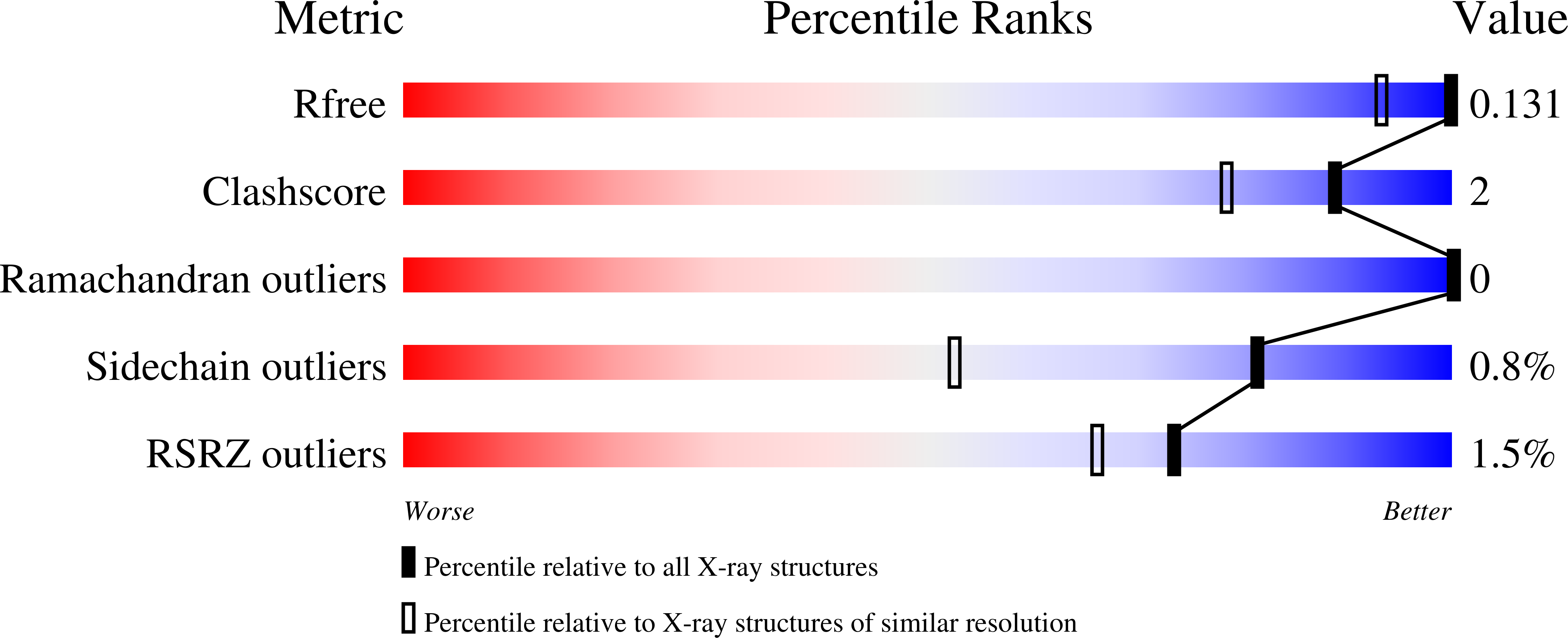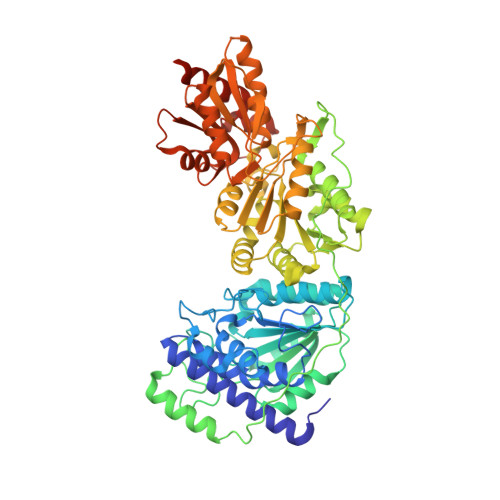Low-barrier hydrogen bonds in enzyme cooperativity.
Dai, S., Funk, L.M., von Pappenheim, F.R., Sautner, V., Paulikat, M., Schroder, B., Uranga, J., Mata, R.A., Tittmann, K.(2019) Nature 573: 609-613
- PubMed: 31534226
- DOI: https://doi.org/10.1038/s41586-019-1581-9
- Primary Citation of Related Structures:
6HA3, 6HAD, 6HAF, 6RJB, 6RJC - PubMed Abstract:
The underlying molecular mechanisms of cooperativity and allosteric regulation are well understood for many proteins, with haemoglobin and aspartate transcarbamoylase serving as prototypical examples 1,2 . The binding of effectors typically causes a structural transition of the protein that is propagated through signalling pathways to remote sites and involves marked changes on the tertiary and sometimes even the quaternary level 1-5 . However, the origin of these signals and the molecular mechanism of long-range signalling at an atomic level remain unclear 5-8 . The different spatial scales and timescales in signalling pathways render experimental observation challenging; in particular, the positions and movement of mobile protons cannot be visualized by current methods of structural analysis. Here we report the experimental observation of fluctuating low-barrier hydrogen bonds as switching elements in cooperativity pathways of multimeric enzymes. We have observed these low-barrier hydrogen bonds in ultra-high-resolution X-ray crystallographic structures of two multimeric enzymes, and have validated their assignment using computational calculations. Catalytic events at the active sites switch between low-barrier hydrogen bonds and ordinary hydrogen bonds in a circuit that consists of acidic side chains and water molecules, transmitting a signal through the collective repositioning of protons by behaving as an atomistic Newton's cradle. The resulting communication synchronizes catalysis in the oligomer. Our studies provide several lines of evidence and a working model for not only the existence of low-barrier hydrogen bonds in proteins, but also a connection to enzyme cooperativity. This finding suggests new principles of drug and enzyme design, in which sequences of residues can be purposefully included to enable long-range communication and thus the regulation of engineered biomolecules.
Organizational Affiliation:
Department of Molecular Enzymology, Göttingen Centre for Molecular Biosciences and Albrecht-von-Haller Institute, Georg-August University Göttingen, Göttingen, Germany.






















